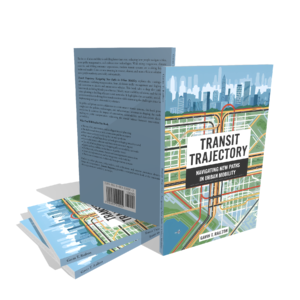Transit Trajectory Urban Mobility Guide – Complete Review of Sustainable Transportation Solutions

Urban mobility transformation starts with understanding the innovative strategies reshaping how cities manage transportation challenges. If you’re struggling with traffic congestion, environmental concerns, or outdated public transit systems, “Transit Trajectory: Charting New Paths in Urban Mobility” offers groundbreaking solutions that forward-thinking cities are implementing worldwide. This comprehensive ebook reveals how AI traffic management, autonomous vehicles, and sustainable transportation innovations are revolutionizing urban planning and creating more efficient, equitable transit systems for everyone.
Unlike other transportation books that focus on theory, this practical guide showcases real-world applications of cutting-edge mobility solutions. You’ll discover how smart cities are integrating micro-mobility options, electric vehicle infrastructure, and community-driven planning to tackle the most pressing urban transportation challenges of our time.
What You’ll Discover
- AI-Powered Traffic Management: Learn how intelligent traffic systems reduce congestion, optimize signal timing, and minimize commute delays using real-time data analysis
- Sustainable Transportation Strategies: Discover innovative approaches to electric buses, clean energy transit, and carbon-neutral mobility solutions that cities are successfully implementing
- Autonomous Vehicle Integration: Master the planning considerations for self-driving vehicles and their impact on urban infrastructure and transportation networks
- Micro-Mobility Solutions: Overcome first-mile and last-mile connectivity challenges with e-scooters, bike-sharing programs, and integrated transit systems
- Community Engagement Frameworks: Transform public participation in urban planning to ensure equitable access and tailored transportation solutions for diverse populations
- Mobility-as-a-Service Implementation: Navigate the future of integrated transportation platforms that seamlessly connect multiple transit options through digital innovation
Why This Book Matters
Urban transportation is at a critical tipping point where traditional approaches simply cannot meet the demands of growing populations and environmental sustainability. This book addresses the urgent need for practical solutions by showcasing proven strategies from cities worldwide. Whether you’re a urban planner, policy maker, or concerned citizen, you’ll gain actionable insights into how technology and community engagement can transform mobility systems.
The author’s expertise in sustainable urban development shines through comprehensive case studies and real-world examples. Rather than theoretical concepts, you’ll find immediately applicable strategies that are already reducing emissions, improving accessibility, and creating more livable cities across the globe.
Key Features
This comprehensive ebook spans multiple detailed chapters covering sustainable transportation innovations, AI traffic management systems, and community-driven urban planning strategies. Available as an instant digital download, you’ll receive immediate access to practical implementation guides, case study analyses, and planning frameworks. The format allows for easy reading on any device, with printable charts and checklists for hands-on application. Also available as audiobook on Google Play Books and Spotify for convenient listening during commutes or while exploring your own city’s transportation systems.
Frequently Asked Questions
Is this urban mobility guide suitable for both professionals and general readers?
Absolutely! While the book contains expert-level insights into transportation planning and sustainable mobility solutions, it’s written in accessible language that anyone interested in urban development can understand. The practical examples and case studies make complex concepts easy to grasp regardless of your background.
How current are the sustainable transportation strategies and AI traffic management techniques?
The book features the latest developments in urban mobility innovation, including cutting-edge AI applications, recent autonomous vehicle trials, and newly implemented micro-mobility programs. All strategies are based on real-world implementations happening in cities today, not theoretical future concepts.
Will this help me understand Mobility-as-a-Service and its practical applications?
Yes, the book provides comprehensive coverage of MaaS platforms and their integration with existing transit systems. You’ll learn how cities are successfully implementing these digital transportation solutions and overcoming common implementation challenges.
Get Your Copy Today
Transform your understanding of urban transportation with this essential guide to sustainable mobility solutions. Available for instant download at just $6.99, this ebook provides exceptional value compared to expensive urban planning courses or transportation consultancy fees. Also available as audiobook on Google Play Books and Spotify for convenient learning during your daily commute. Purchase your copy through all major ebook retailers including Apple Books, Barnes & Noble, and Kobo to begin revolutionizing your approach to urban mobility challenges today.
Watch the Video Review

